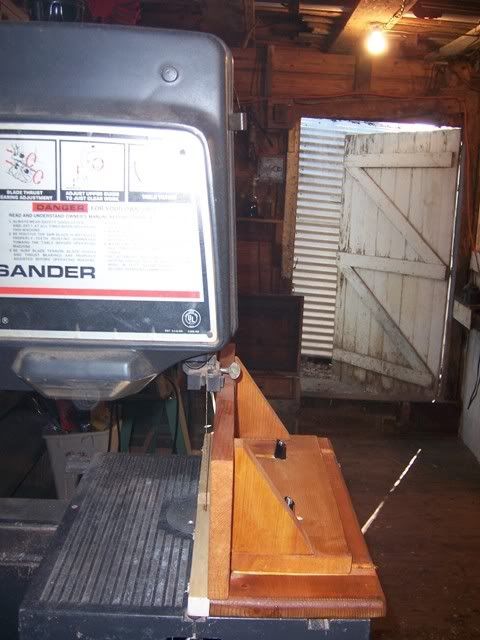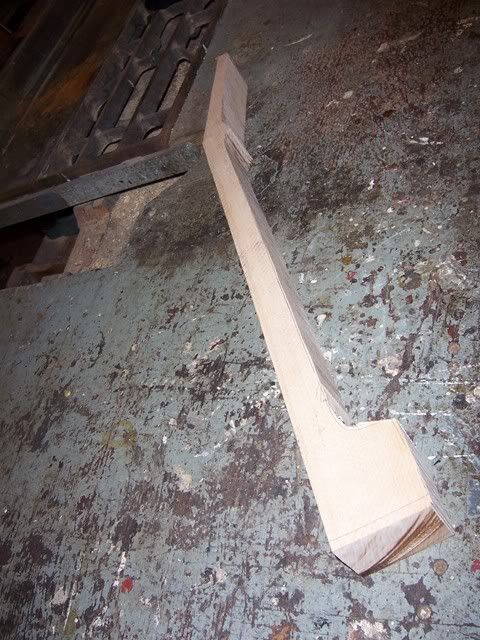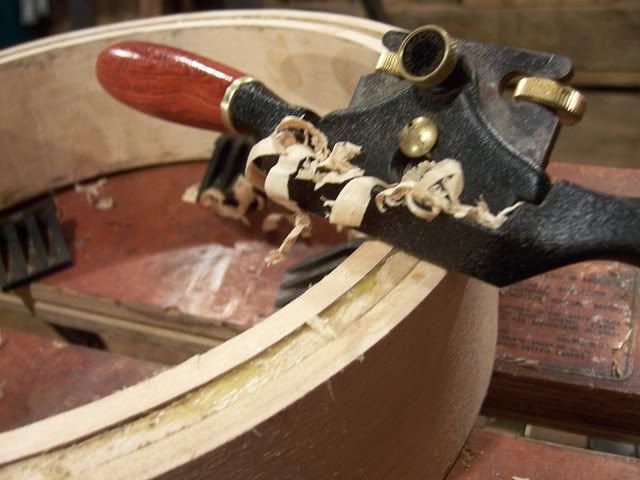
This week has been rainy and unusually cold for this time of the year. With the dark, low lying clouds and the steady drizzle, it was perfect working in the shop, hot cup of coffee in hand. Luckily, I had one good day to work on the banjo, which is unusual lately. When I wasn't listening to the gentle patter of rain falling on the old tin roof, I was listening to John Fahey's Days Have Gone By on the stereo. Life could not have been more peaceful.
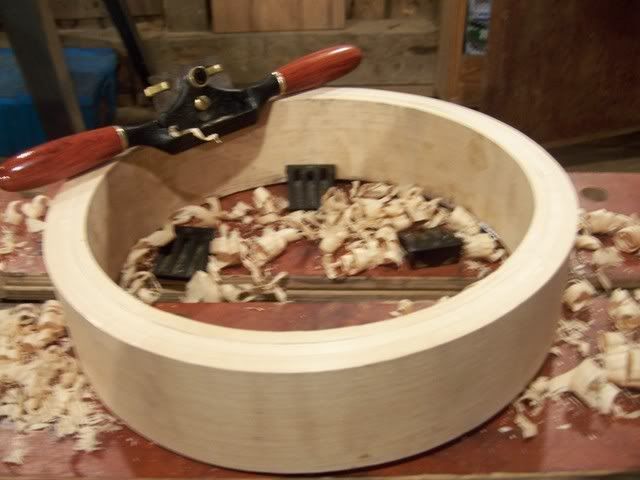
This week I used the spokeshave to even the pot, and I began shaping the neck. The spokeshave is the most rewarding tool in my toolbox. Before I began making banjos, I was interested in the handtools in my grandfather's shop. It seemed to me then, that handtools were difficult to use and required great force, but just the opposite is true. It is best to let the tool work for you, as any tool should. To glide the spokeshave across the wood and produce paper thin shavings is a mighty rewarding experience. The photograph to the left shows the completed pot.
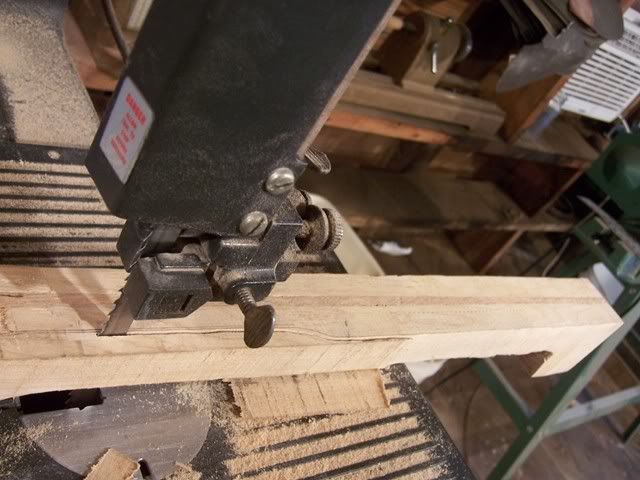
I also began to shape the neck. To do this, I first cut out the shape on the bandsaw. This shape, while still very angular, is closer to the final shape of the neck. Here you can see the shape of the hump that is characteristic of a 5 string banjo.
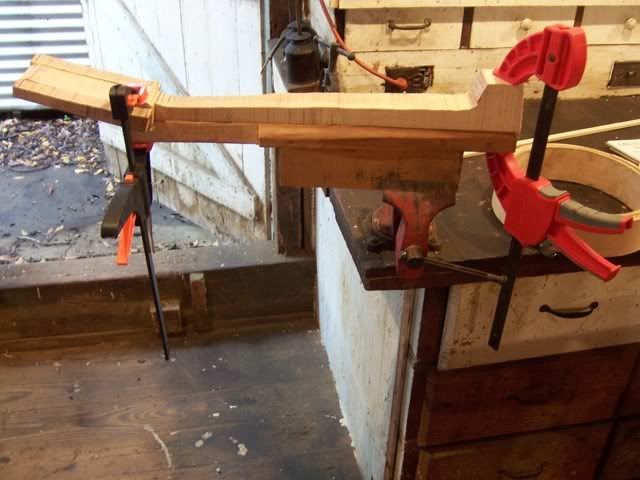 The neck is then clamped onto a jig to hold it above the vice. I built this jig to give me more room above the vice, this keeps my hands free from hitting the vice as I shape the sides of the neck. I also cut some peghead overlay from the same ebony block that I cut the fingerboard, and glued the overlay in place.
The neck is then clamped onto a jig to hold it above the vice. I built this jig to give me more room above the vice, this keeps my hands free from hitting the vice as I shape the sides of the neck. I also cut some peghead overlay from the same ebony block that I cut the fingerboard, and glued the overlay in place. I also took the opportunity to rough out a couple of neck blanks and glued up another pot.
I also took the opportunity to rough out a couple of neck blanks and glued up another pot.
Well, that's it for this week. A small step for mankind, but a big step for me. (I got that from somewhere, but I can't for the life of me remember where).



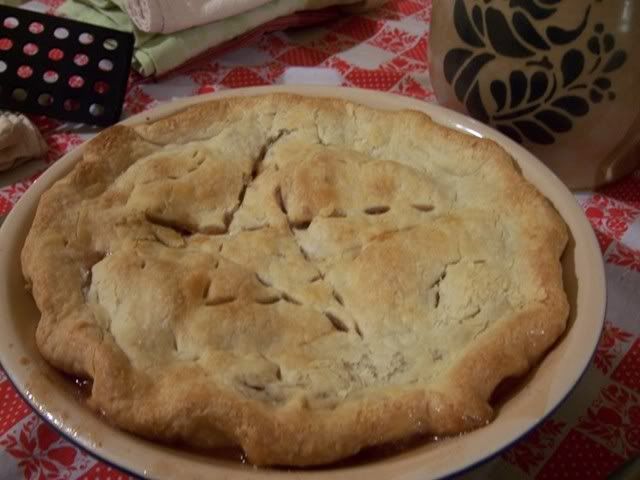

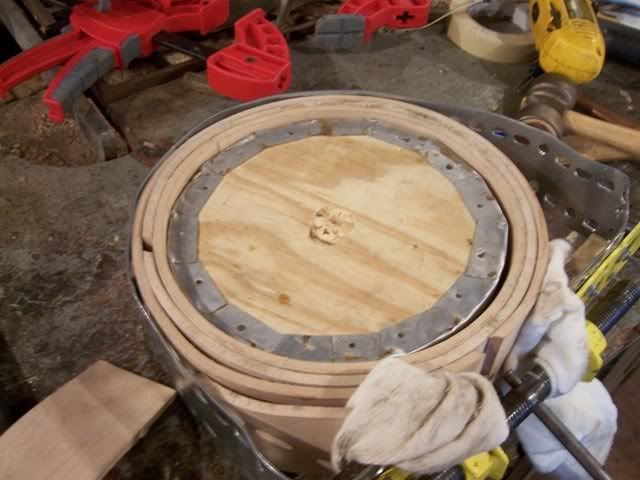
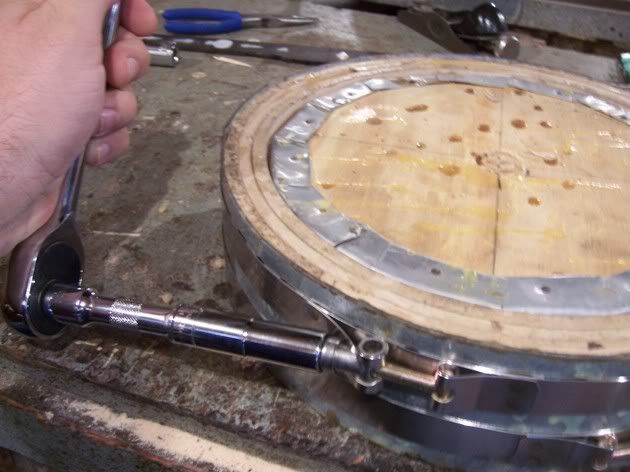 To the left is a photo of my new clamping system. I built the new clamp from two 5.5" and two 6" T-bolt clamps around a metal strap, cut to length. The strap doesn't look strong enough to handle the pressure, but it feels strong, and there are four pressure points, which will help distribute pressure. So far the clamp has worked perfectly. So, as long as it can continue to handle the pressure, we're in business.
To the left is a photo of my new clamping system. I built the new clamp from two 5.5" and two 6" T-bolt clamps around a metal strap, cut to length. The strap doesn't look strong enough to handle the pressure, but it feels strong, and there are four pressure points, which will help distribute pressure. So far the clamp has worked perfectly. So, as long as it can continue to handle the pressure, we're in business. 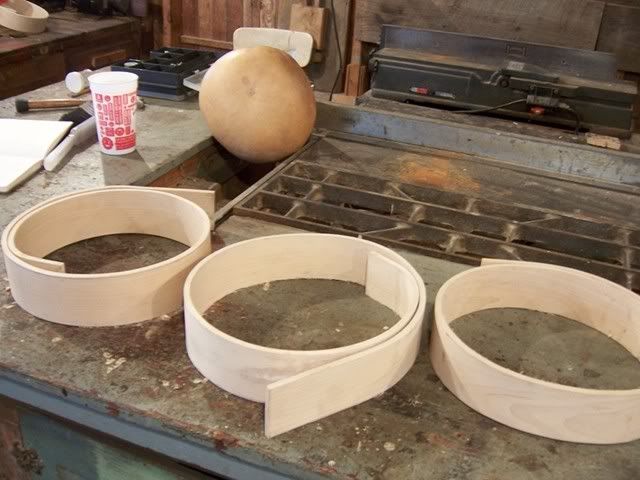
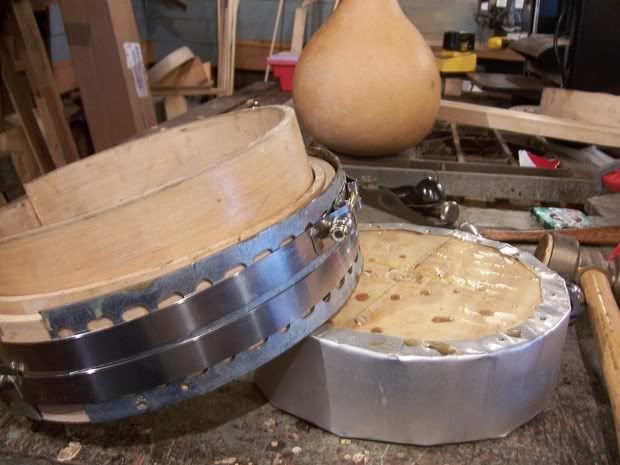

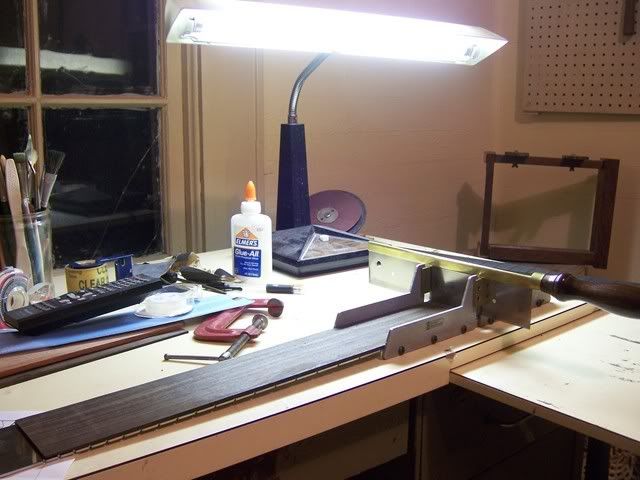
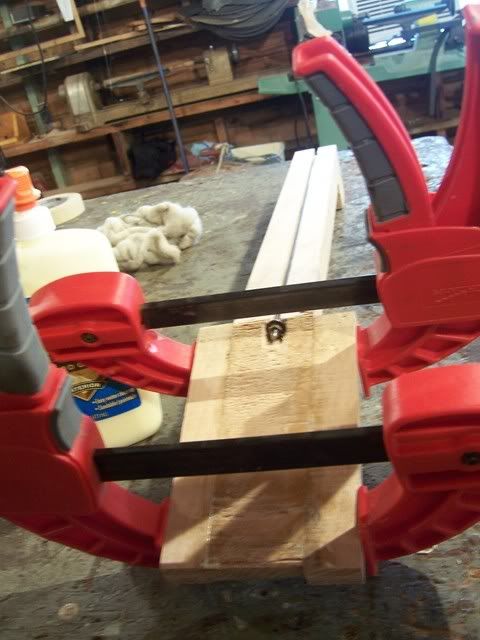
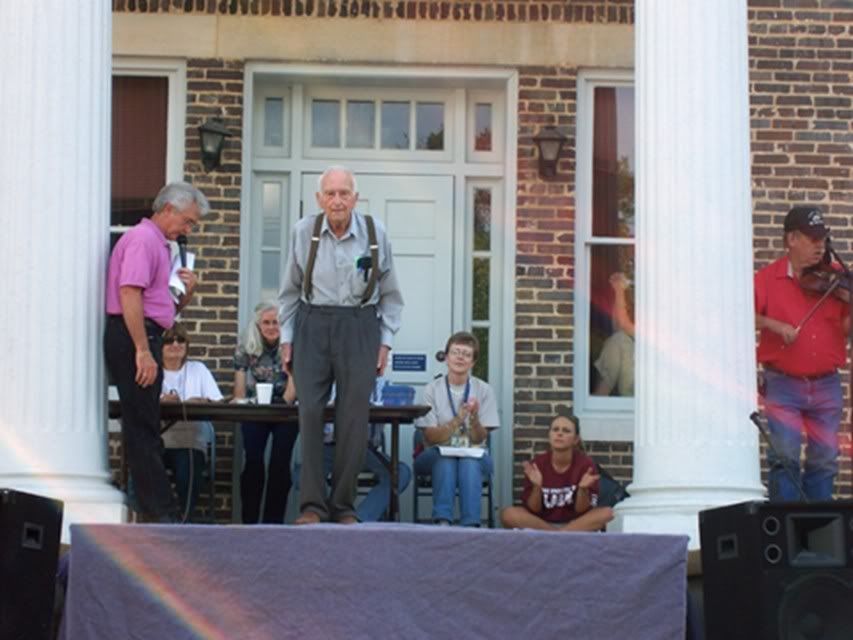
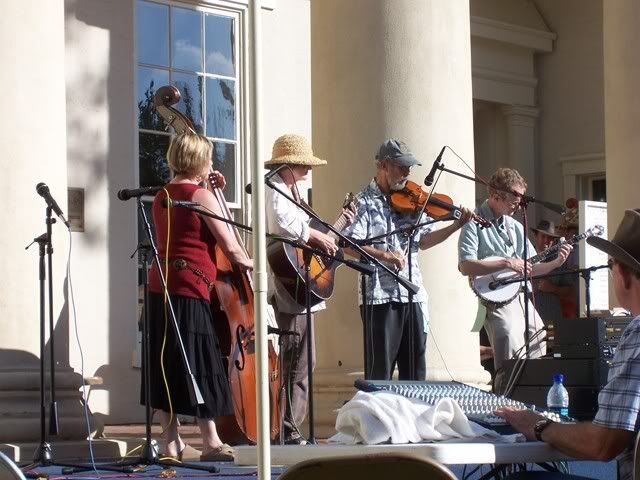
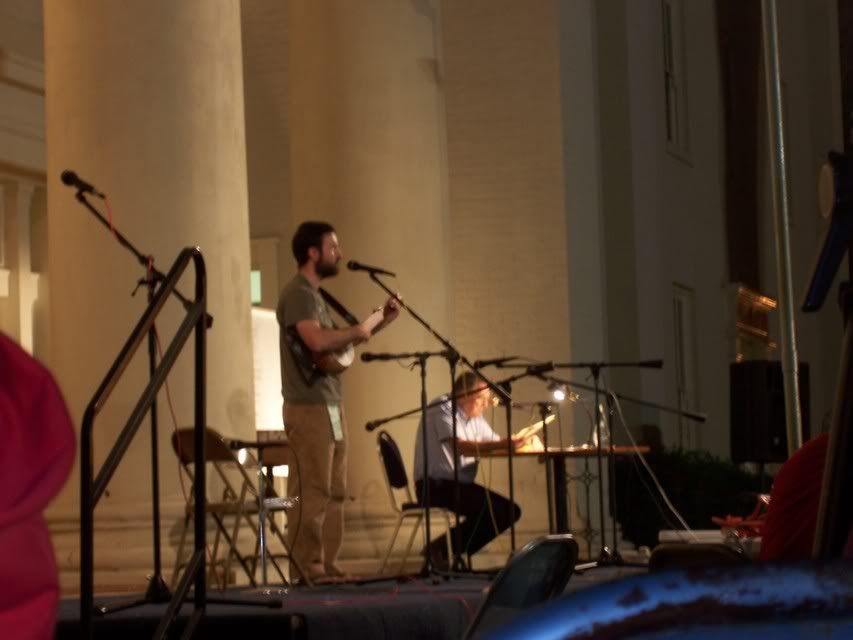

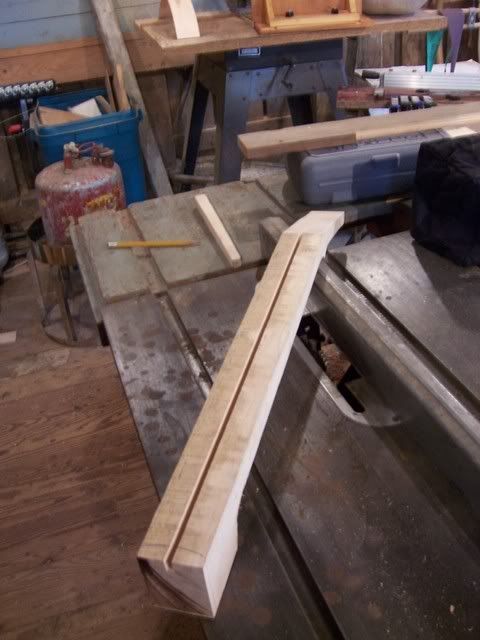
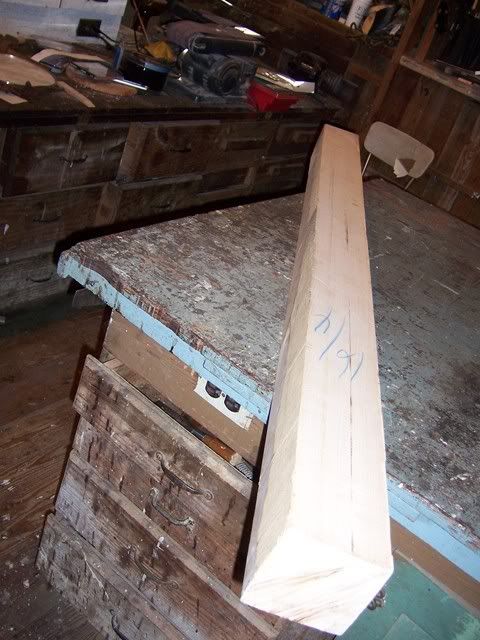


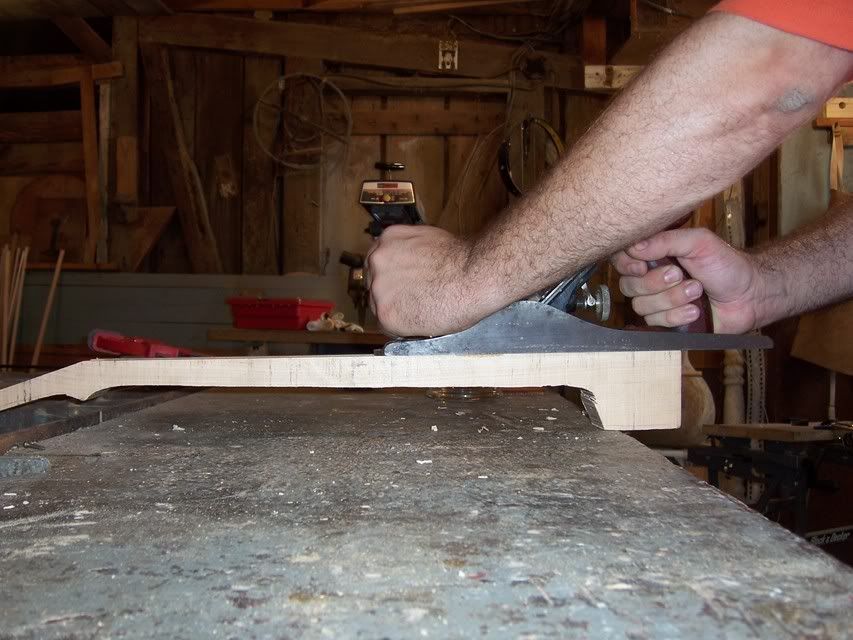

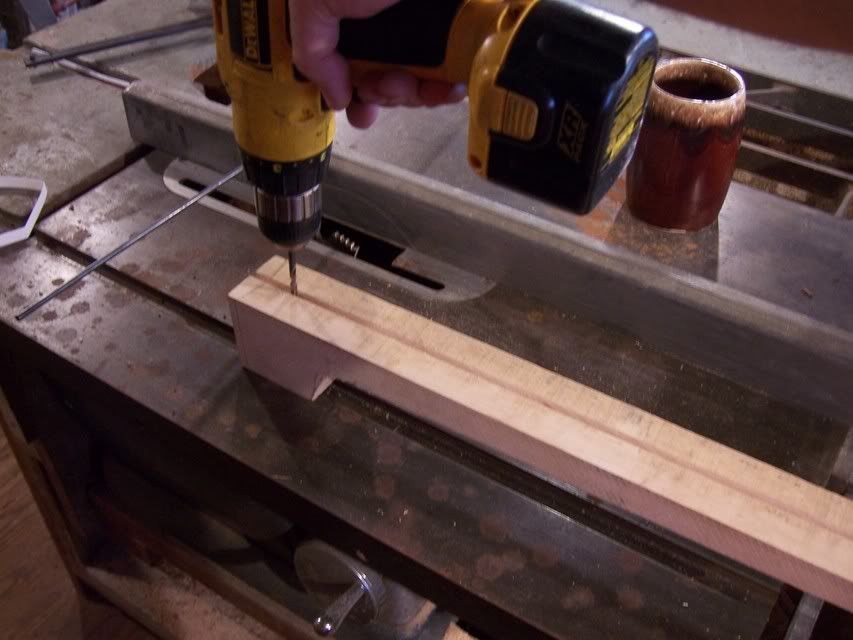
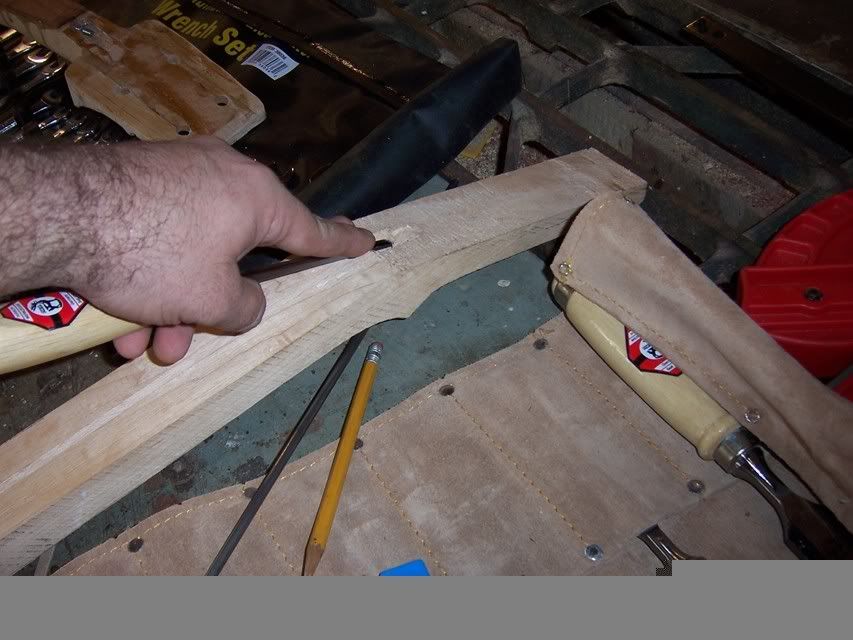

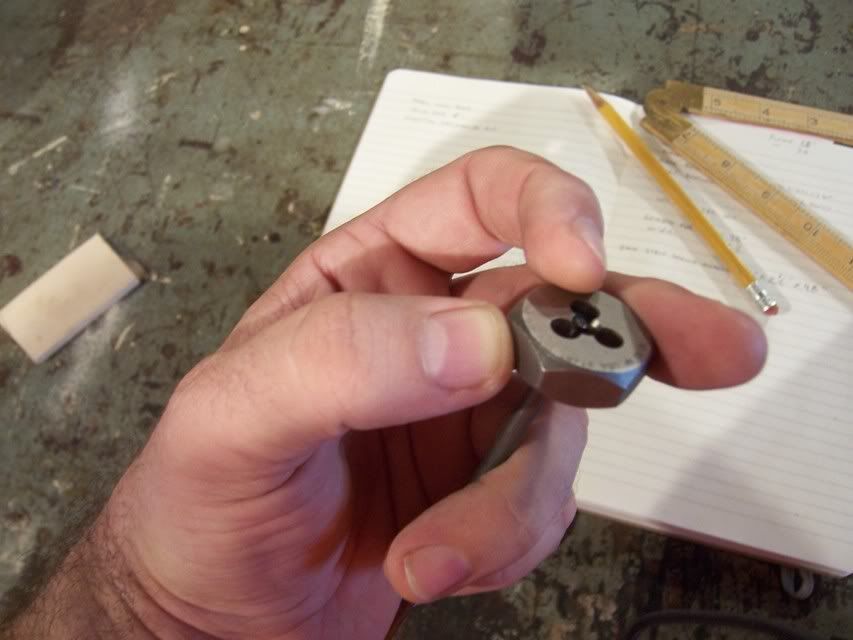
 I built this jig to
I built this jig to 